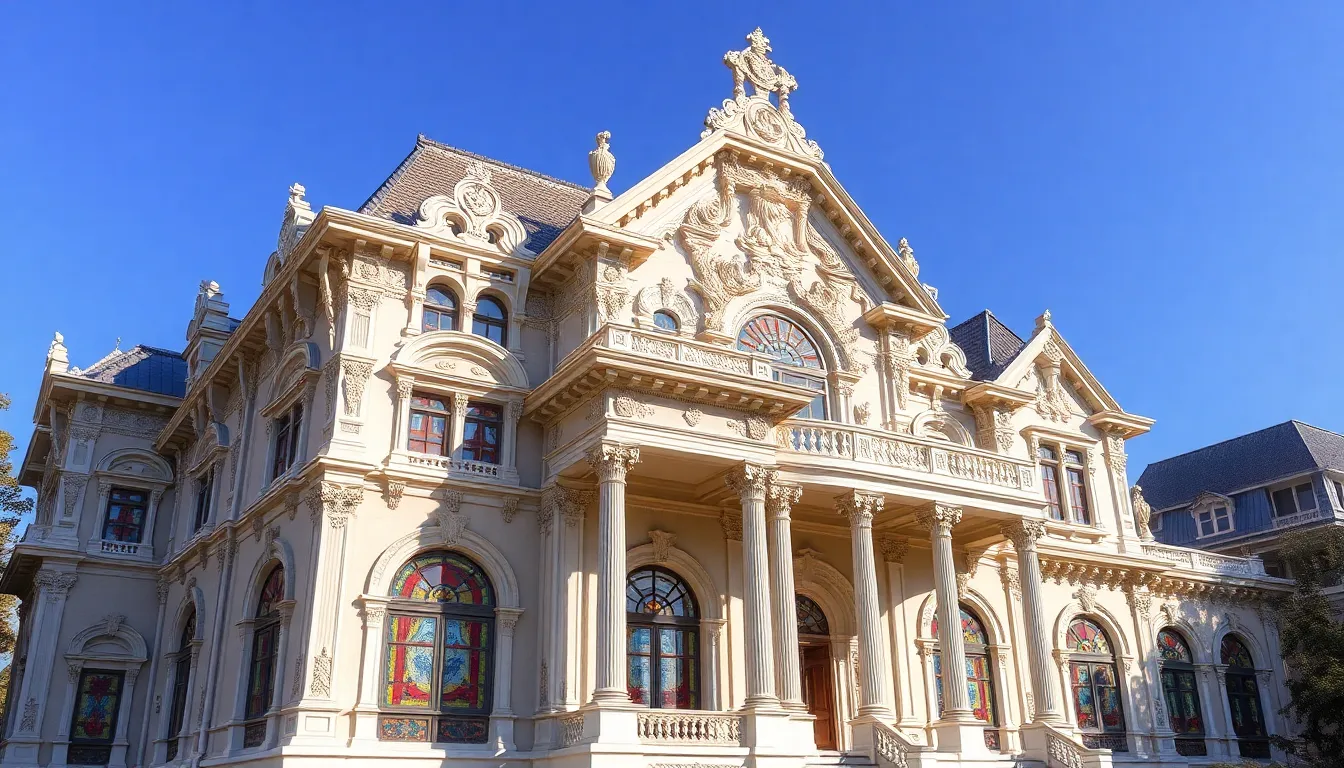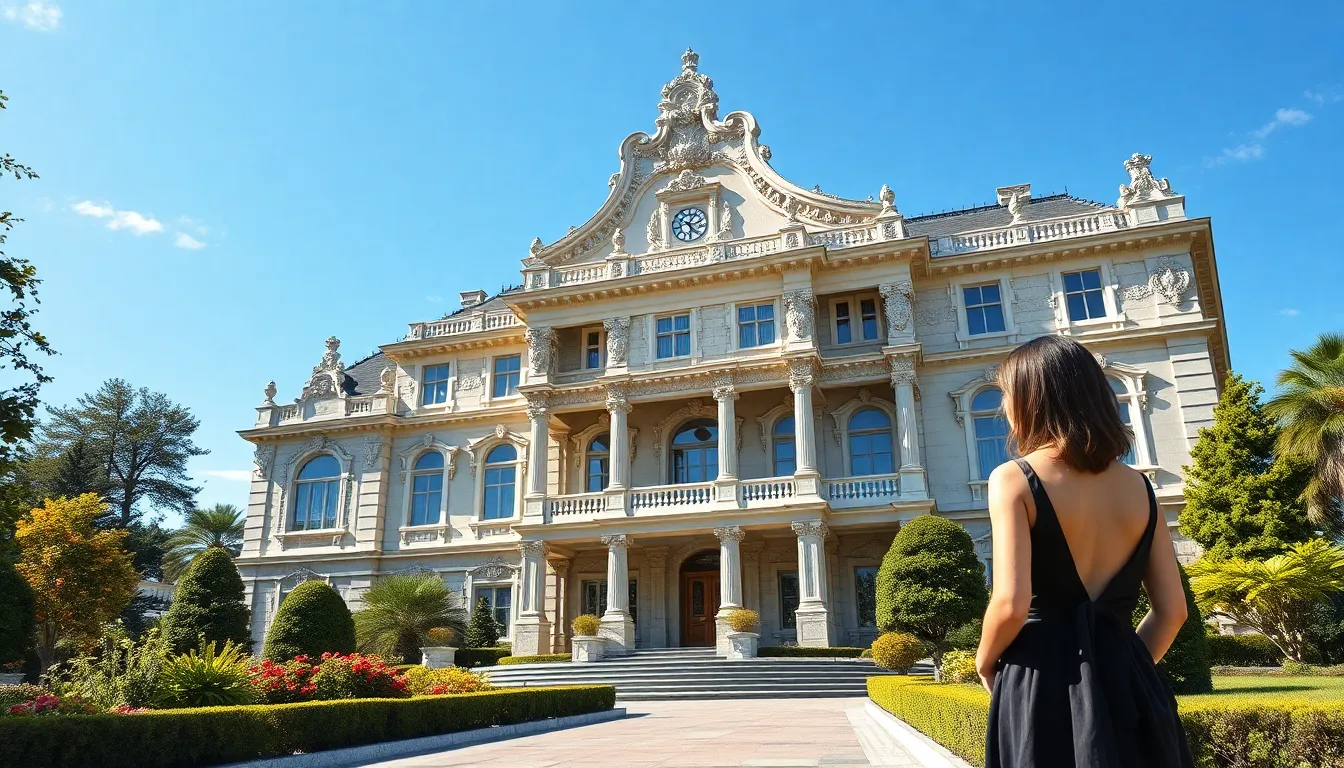Step into the world of baroque architecture, where every corner whispers tales of extravagance and drama. Imagine a house that’s not just a home but a theatrical masterpiece, bursting with ornate details and grandeur. If you’ve ever wanted to live in a place that feels like a royal palace, baroque architecture is your ticket to a life of opulence—minus the crown, of course.
Table of Contents
ToggleOverview of Baroque Architecture
Baroque architecture emerged in the late 16th century, distinguished by its exuberant detail, vivid colors, and dynamic shapes. Characteristically, this style emphasizes grandeur and dramatic designs, resulting in structures that often evoke emotional responses. Ornate features frequently adorn facades, creating visual splendor that captures attention.
Numerous examples exemplify baroque architecture, including the Palace of Versailles in France and St. Peter’s Basilica in Vatican City. These buildings showcase intricate carvings, expansive staircases, and striking domes, all contributing to their majestic allure. Churches often highlight this grandeur, displaying elaborate altarpieces and lavish interiors that reflect the power and wealth of the Catholic Church during this period.
Materials used in baroque architecture include stone, marble, and stucco. These materials enhance the overall opulence and provide a sense of permanence. Employing bold contrasting colors, architects created extraordinary visual contrasts, making each structure a feast for the eyes.
In terms of spatial design, baroque buildings often integrate fluidity and movement. Curved lines and flowing forms dominate, steering clear of rigid symmetry. The layout typically encourages exploration, with spaces that unfold in surprising ways, leading visitors through a journey of discovery.
Overall, baroque architecture exemplifies a rich historical narrative, where aesthetics and symbolism converge. This style evokes a sense of grandeur and drama, leaving a lasting impact on architectural history and influencing various subsequent artistic movements.
Key Characteristics of Baroque Architecture Houses

Baroque architecture houses showcase several defining features that contribute to their unique style. These characteristics create an inviting atmosphere that emphasizes artistry and grandeur.
Ornate Details
Intricate carvings often adorn the facades of baroque houses, reflecting a commitment to craftsmanship. Decorative elements such as gilded moldings and elaborate sculptures capture attention. Elaborate woodwork enhances door frames and windows, providing visual interest from various angles. Stained glass windows add vibrant colors, flooding interiors with natural light while creating stunning visual displays. Ceilings frequently feature fresco paintings, transforming spaces into captivating art galleries. Each ornate detail serves a purpose, drawing the eye and evoking feelings of awe.
Dynamic Shapes
Curved lines dominate the architecture, providing a sense of motion and fluidity. Architects often employed rounded forms, adding depth to the overall appearance. Tall, slender columns emphasize verticality, while arches create a seamless flow between interior and exterior spaces. Rooflines often boast dramatic curves, contributing additional layers to the design. Notable features like domes often punctuate the skyline, showcasing the grandeur typical of the baroque style. This interplay of dynamic shapes makes baroque houses visually striking and memorable.
Famous Baroque Architecture Houses
Baroque architecture houses represent luxurious design and artistic expression. Their intricate details and grand proportions captivate many.
Villa Rotonda
Villa Rotonda, designed by Andrea Palladio in the 16th century, stands as a hallmark of Italian architecture. Its symmetrical layout and circular plan reflect the harmony found in classical architecture. The villa features a portico on each side, marked by iconic columns. Its elegant interior boasts frescoes by renowned artists, enhancing the overall beauty of the space. Gardens surround Villa Rotonda, embodying the connection between architecture and nature. Visitors often admire how the villa’s design continues to influence modern architecture and landscape design.
Casa de la Cultura
Casa de la Cultura, located in Cuernavaca, Mexico, showcases stunning baroque features. This cultural center resides in a building that once served as a convent in the 16th century. Intricate carvings and elaborate stonework adorn its façade, attracting many tourists. Inside, the structure offers various museums and exhibits dedicated to Mexican art and history. The atmospheric courtyards invite visitors to explore the interplay of artistry and culture. Consequently, Casa de la Cultura stands as a significant example of baroque architecture blending with regional identity.
Baroque Architecture in Modern Context
Baroque architecture continues to inspire contemporary design, offering a rich source of creativity and innovation. Modern architects often incorporate elements of this ornate style into new structures, blending tradition with functionality.
Adaptations in Contemporary Design
Contemporary buildings frequently feature baroque-inspired aspects, such as intricate moldings, lavish ornaments, and dramatic facades. These adaptations highlight bold curves and dynamic shapes, capturing the essence of baroque grandeur while catering to modern needs. High-rise structures now incorporate elements like expansive windows, allowing natural light to interact with decorative interiors. Moreover, contemporary designers favor sleek materials, using glass and steel to create minimalist environments enriched with baroque flair. This approach revitalizes urban spaces, transforming cityscapes with opulent touches that reflect a timeless elegance.
Preservation Efforts
Preservation of baroque architecture involves meticulous maintenance and restoration of historical sites. Organizations worldwide prioritize these efforts, ensuring the integrity of original materials and craftsmanship remains intact. Architects and historians collaborate to revive iconic structures, often utilizing advanced technology to restore faded details. Funding from governments and private entities significantly supports these initiatives, helping to maintain the cultural significance of baroque buildings. Community involvement fosters appreciation and awareness, with local groups advocating for the preservation of nearby baroque gems. Collectively, these efforts ensure future generations experience the splendor of this architectural style.
Baroque architecture houses stand as timeless symbols of opulence and artistic expression. Their intricate designs and lavish details create an atmosphere that captures the imagination. Living in such a home offers a unique experience that transcends ordinary living, allowing residents to embrace a piece of history.
As modern architects draw inspiration from this grand style, baroque elements continue to find their way into contemporary designs. The commitment to craftsmanship and the allure of dramatic aesthetics ensure that baroque architecture remains relevant and admired. Through preservation efforts and community engagement, the legacy of this architectural marvel is set to endure, allowing future generations to appreciate its beauty and significance.




